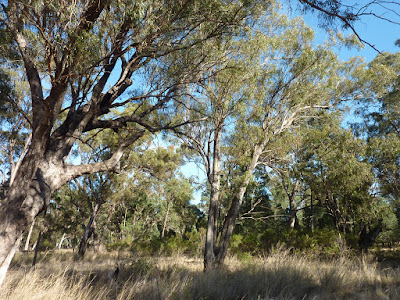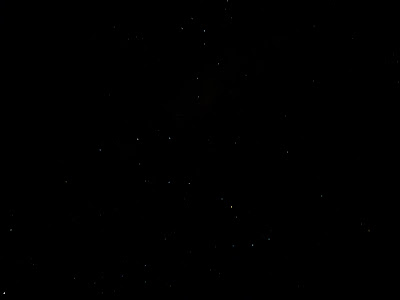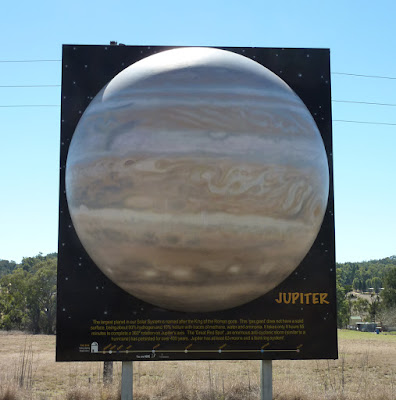 |
| our campsite in the bush near Gilgandra |
Camping in a forest of eucalyptus in NSW, we looked up through a clearing to find the most wonderful night sky with stars of exceptional clarity and brightness. This low-tech image below, a 60 second exposure where I left the camera on the ground, shows the varied colours of the stars. What it doesn't convey however, is the dark area in the milky way. Initially surprised by how clear the milky way was in the night sky, we suddenly noticed that there was a significant amount of darkness within it which I've subsequently learned is called the coalsack nebula and the "Emu" - an aboriginal constellation consisting of darkness rather than stars.
 |
the sky in the southern hemisphere photographed near Gilgandra, NSW.
(click on the image to enlarge enough to view) |
Like it's northern hemisphere counterpart the great rift, the Emu is an area of darkness in the night sky that makes it evident that the night sky is never really totally dark. However, these dark areas are not voids, or absences; the dark patches are star forming regions in our galaxy. Proto-stars (newly forming stars) generate molecular dust that doesn't allow light in the visible spectrum to shine through. However, with the advancements of telescopes that see in different light waves (e.g. x-rays or infrared) we now know that there is activity in these dark areas. This too reminds me of my earlier post on a new man made
light absorbing material.
 |
| the "emu" (image by D. Smith) |
I feel I've a lot to learn about aboriginal culture, and being here has sparked an interest in it for me. But I'm especially fascinated to learn of a culture that values the dark spaces, the interstices of the sky as much as it's light and objects.
We were en route to the Warrumbungles and Coonabarabran which have two observatories, being at a higher elevation (1160m above sea level) than the surrounding countryside. Clearly, this is good sky-watching country. Sliding Spring Observatory is housed inside the Warrumbungle National Park, and is Australia's largest optical astronomy research facility.
Back to solid visible objects, as you drive along the road to Coonabarabran, you pass various models of the planets in our solar system with the 37m dome of Sliding Spring Observatory representing the sun.
 |
| "Jupiter" |
These are scale models (38 million times smaller than the real thing) of the planets in our solar system with relative distances between them as you drive. It was designed to give you an idea of the vastness of the solar system. There's at least an hour and a half of driving between Jupiter and Neptune, the two planets we passed; I'd almost forgotten about it until Neptune popped up, reminding me of the huge space between them. Remembering there's only 5 minutes drive between the Sun, Mercury, Venus, Earth and Mars, the distances to the outer planets are phenomenally huge.
 |
| Jupiter, west of Coonabarabran |
 |
| Neptune, in Gunnedah |
(See also
here for a post on the Guugu Yimithirr people of Northern Queensland).










